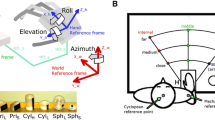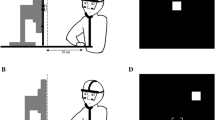Abstract
The role played by the attentional mechanisms that enable dominance of relevant objects over distractor objects was investigated by measuring changes in the kinematics of the reach-to-grasp movement. Subjects reached towards three-dimensional (3D) stimuli while attention was diverted towards distracting information consisting of either two-dimensional (2D) projected shapes or 3D objects. Movement kinematics were influenced to a greater degree when a secondary task was performed involving a 3D object rather than a 2D projected shape. When the distractor was 3D, both the reaching and the grasping components were altered but, when it was 2D only, the reaching component was modified. It is suggested that, when attention is directed towards a distractor, it is associated with interference in the kinematics of the action towards the target. Further, the nature and dimensions of the distractor selectively influence the reach or the grasp component of a prehension movement.
Similar content being viewed by others
Author information
Authors and Affiliations
Additional information
Received: 17 November 1997 / Accepted: 12 May 1998
Rights and permissions
About this article
Cite this article
Castiello, U. Attentional coding for three-dimensional objects and two-dimensional shapes Differential interference effects. Exp Brain Res 123, 289–297 (1998). https://doi.org/10.1007/s002210050571
Issue Date:
DOI: https://doi.org/10.1007/s002210050571




